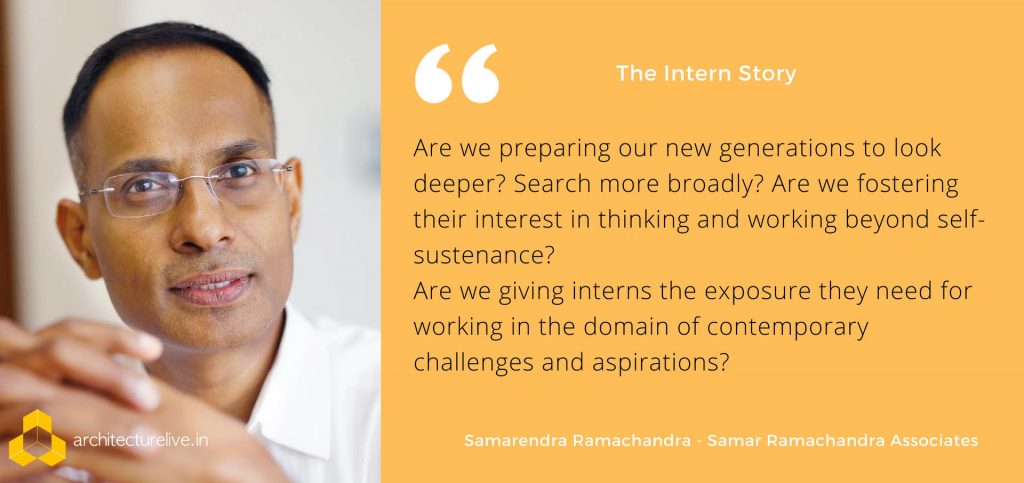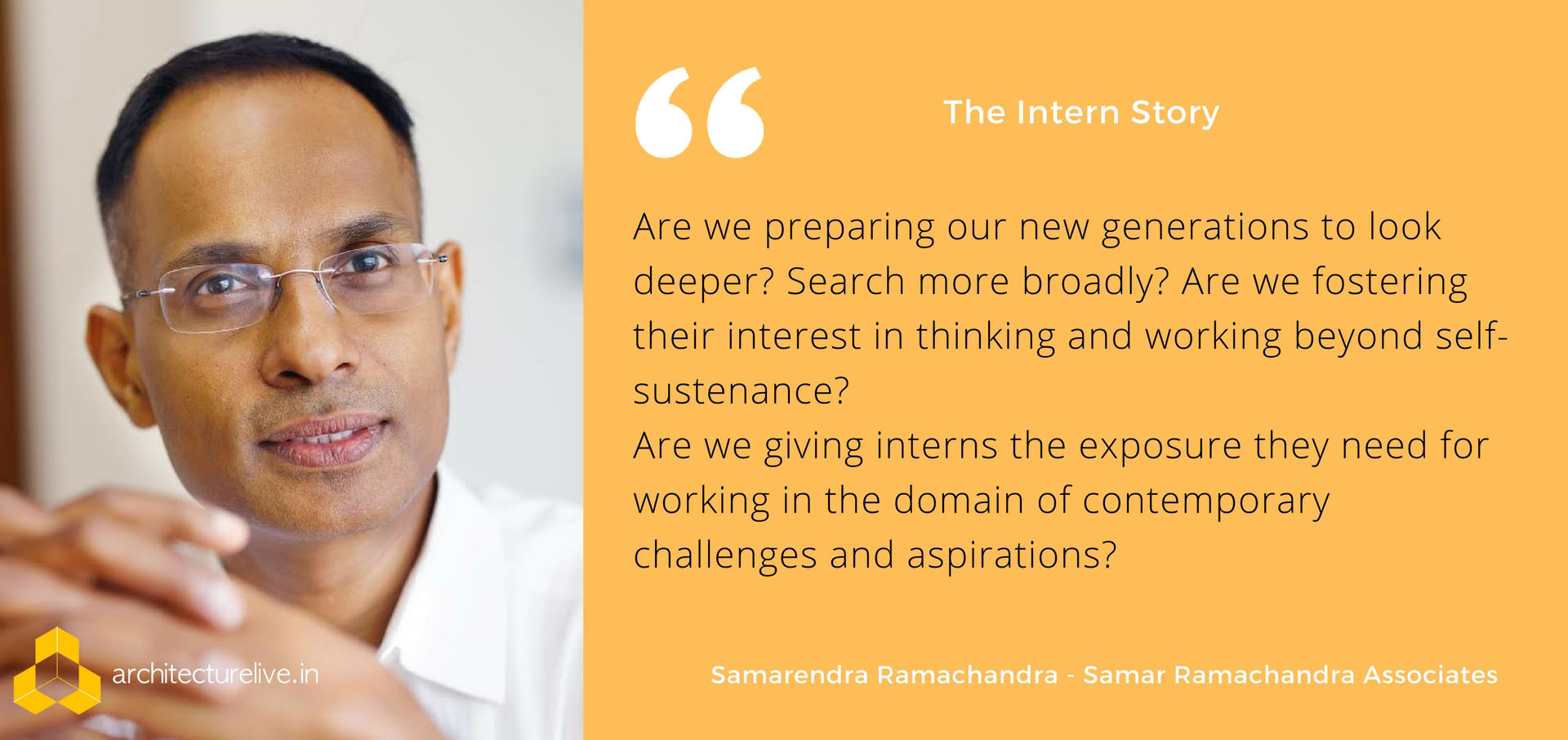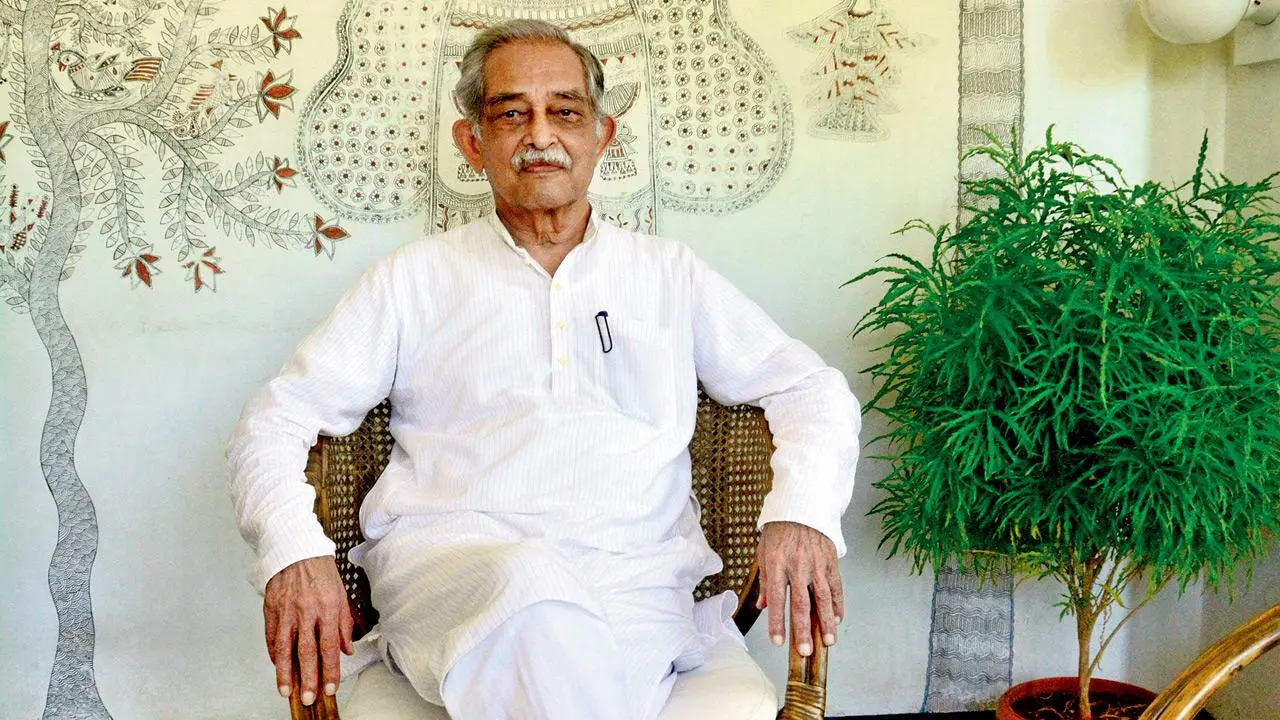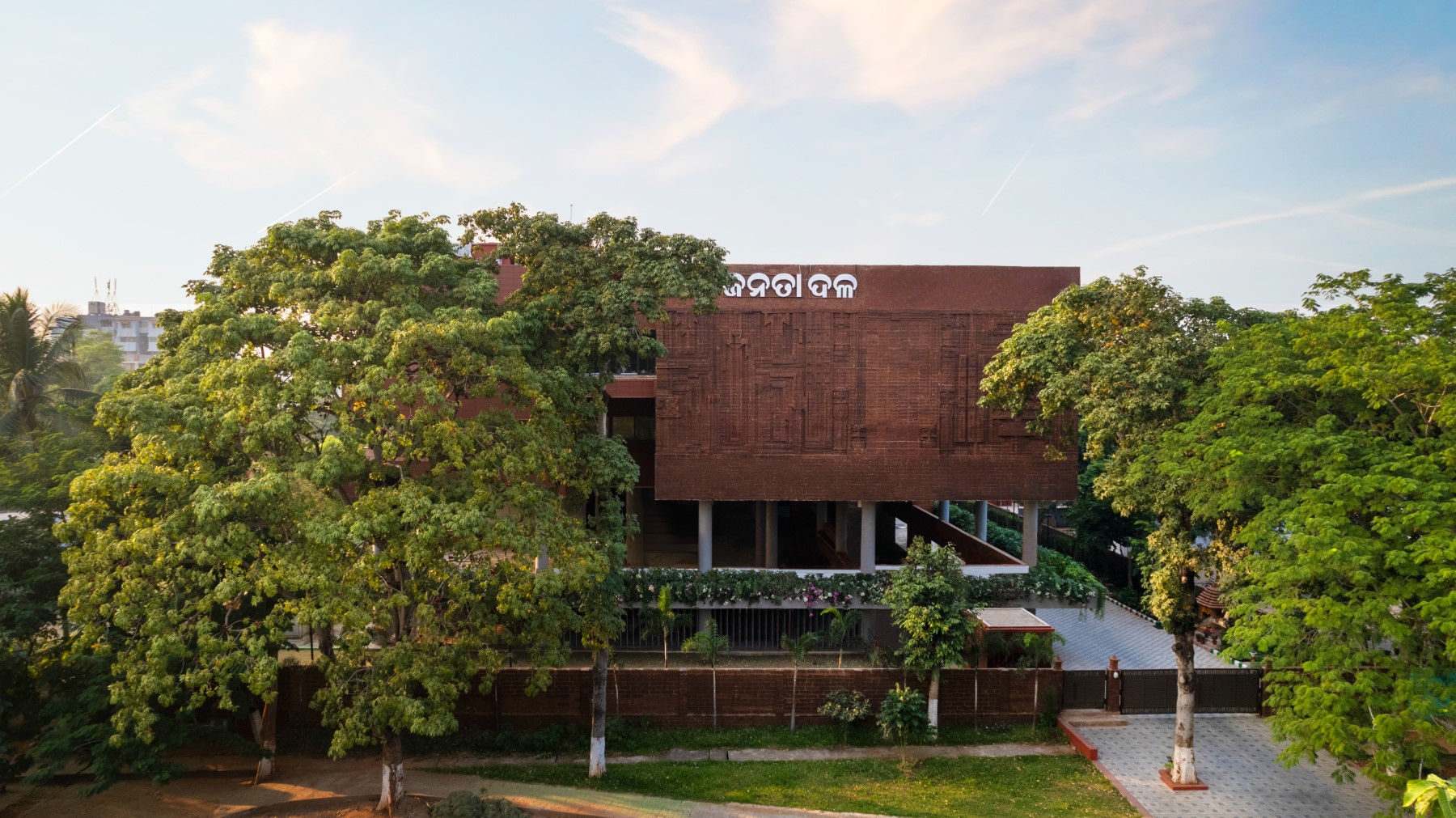Student internship is a quintessential part of an architectural education. However, it is increasingly becoming an unmitigated ordeal for many within the community. Affecting both students and practicing architects, the workforce imbalance and issues of ineptitude have created an unfavourable – and often exploitative – situation.
Inviting the opinions of architects, educators and students, we strive to start a conversation about what can be done to improve this situation. Below, Samarendra M. Ramachandra of Samar Ramachandra Associates share his opinions about the issue.

We are hurting each other in the profession of architecture.
Every new batch of architectural students – emerging out of the ever increasing number of colleges – faces a lack of decent internship opportunities. Very often, this is followed by a frustrating experience as an intern, leaving students disappointed and disillusioned.
I have attended various forums addressing this issue with the academia and practicing colleagues. I have also conducted some candid-speaking sessions with students. General discontent, it seems, outweighs the specific case scenario. The situation is being seen in fragments and the blame is always with the other.
The opinions, in general, are as follows:
- Practicing architects see students as a burden to deal with – increased numbers, accommodation into the office space, demand on time and money. More importantly, the attitude of the seekers! Architects also feel that school evaluation systems are rigid and imposing.
- Students see the practising fraternity as blocking their career aspirations. They report limited opportunities, undue demands on qualification and the exploitation of their time and effort. More notably, the high handed or negligent attitude of the people at work!
- The faculty in charge at the schools see the internship as wasted opportunities. They do not usually find the work done in internships representative of the comprehensive experience they intended. Furthermore, schools often find the engagement to be of little relevance to their syllabus as continued education.
Clearly, something is amiss.
I think it is simple – an absence of an attitude towards learning. Giving, taking and sharing in the spirit of learning.
The definition of learning has downgraded to a job seeking tool. We see it as a term implying skill acquisition for gaining prospects to get the materialistic world’s attention. This, therefore, translates into treating an internship as a “getting-on-board project”. Everyone is in a hurry to extract a suitable working experience targeted towards facing a market of consumption. The architect expects the intern to get going – to produce drawings and models for release to clients – and is impatient at any inability to do so. The student expects designing tasks and a stake in participation in all the aspects of the design and development process of an office. The teachers at school leave the students to fend for themselves as long as they return with an admissible “portfolio” of office works.
The expectations are evidently wrong.
It is true that an internship prepares one for facing the real world. Discipline in production of drawings is relevant to understanding an office’s design process. Primarily, though, architecture today requires a whole new level of involvement with diverse fields. We are facing significant challenges to meet the concerns of an increasingly burdened environment.
So, what are we doing to mitigate this problem?
Are we preparing our new generations to look deeper? Search more broadly? Are we fostering, moreover, their interest in thinking and working beyond self-sustenance?
Are we giving interns the exposure they need for working in the domain of contemporary challenges and aspirations? Can we mentor them to develop the ability to work, the sensitivity to realise, and the boldness to face these real issues?
Can’t they be taught to do real research in this context? Surely they can be taught to work on site as well as the office on experimental models and preparing presentations? Can’t they be taught to carry out the same exercises as that of academic environments – but in a real-world scenario?
Interns can be instrumental in delving into the aspects of introspective processes that the working team scarcely finds time for, in their everyday operations.
Can’t practicing architects and their colleagues in the office, then, begin to share not just the work load, but the thought-load too? Can’t we all become the participants of a selfless process?
Maybe it is time we do.
Ar. Ramachandra has also conducted a seminar on Architectural Internships. You can find the videos here, and part 1 of the session below:
 Samarendra M. Ramachandra completed his B.Arch from IIT Kharagpur with honours. He is the founder and principal architect of Samar Ramachandra Associates, Hyderabad, which also includes SRA Build and SRA Edu.
Samarendra M. Ramachandra completed his B.Arch from IIT Kharagpur with honours. He is the founder and principal architect of Samar Ramachandra Associates, Hyderabad, which also includes SRA Build and SRA Edu.








One Response